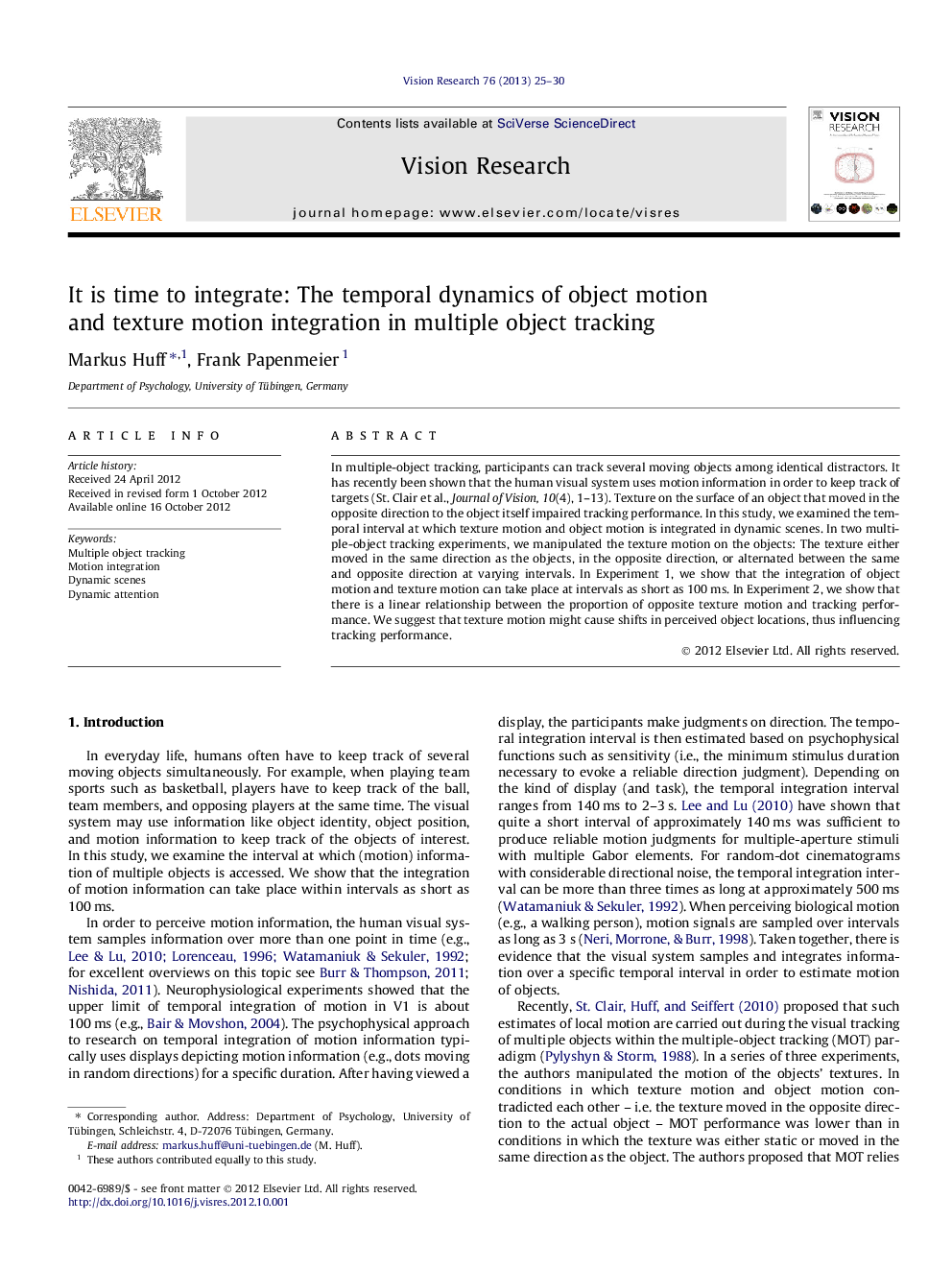| Article ID | Journal | Published Year | Pages | File Type |
|---|---|---|---|---|
| 6203627 | Vision Research | 2013 | 6 Pages |
In multiple-object tracking, participants can track several moving objects among identical distractors. It has recently been shown that the human visual system uses motion information in order to keep track of targets (St. Clair et al., Journal of Vision, 10(4), 1-13). Texture on the surface of an object that moved in the opposite direction to the object itself impaired tracking performance. In this study, we examined the temporal interval at which texture motion and object motion is integrated in dynamic scenes. In two multiple-object tracking experiments, we manipulated the texture motion on the objects: The texture either moved in the same direction as the objects, in the opposite direction, or alternated between the same and opposite direction at varying intervals. In Experiment 1, we show that the integration of object motion and texture motion can take place at intervals as short as 100Â ms. In Experiment 2, we show that there is a linear relationship between the proportion of opposite texture motion and tracking performance. We suggest that texture motion might cause shifts in perceived object locations, thus influencing tracking performance.
⺠The human visual system uses motion information in order to keep track of targets. ⺠We examined the temporal interval at which object motion and texture motion is integrated in dynamic scenes. ⺠We show that motion integration can take place at intervals as short as 100 ms. ⺠We suggest that texture motion might cause shifts in perceived object locations, thus influencing tracking performance.
